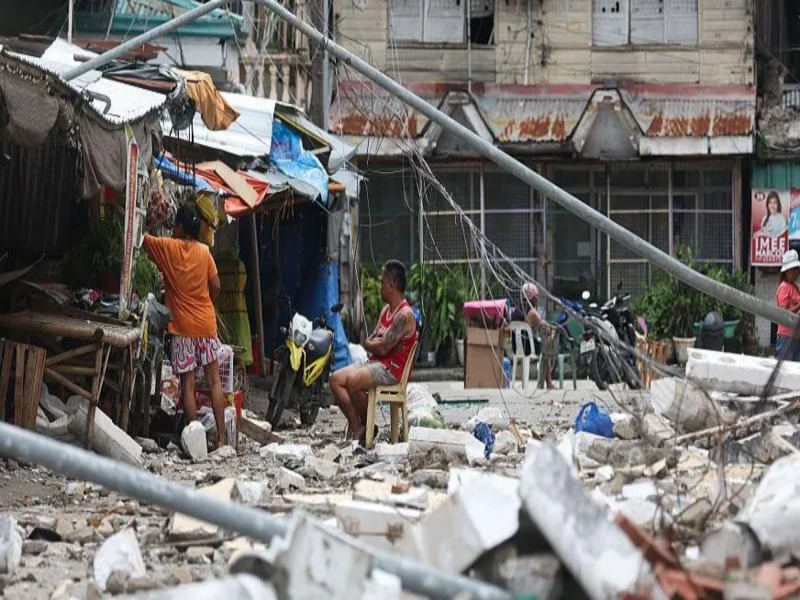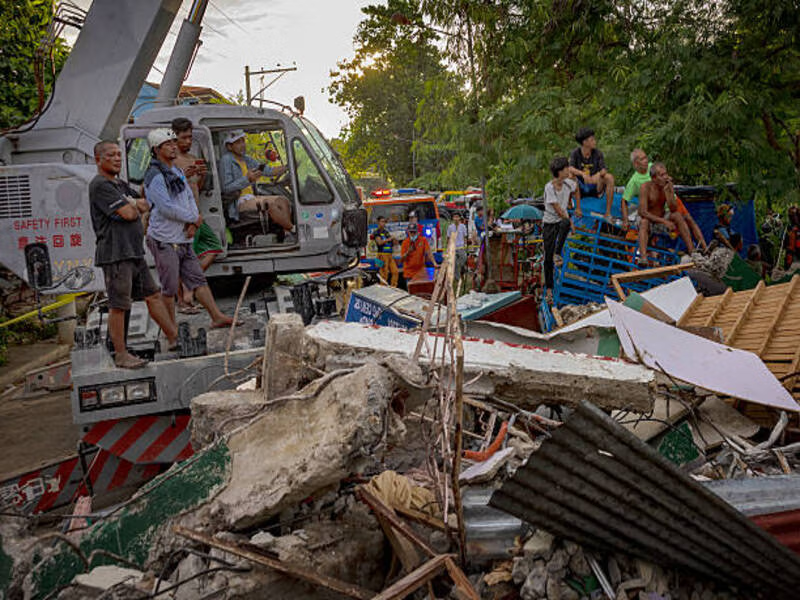There have been at least 69 fatalities and dozens of injuries following a devastating earthquake of magnitude 6.9 that hit the Philippines’ central region towards the end of the night on Tuesday.
The Cebu province that bore most of the damage declared the state of calamity early on Wednesday, after thousands of people spent the night in the streets as frequent aftershocks shook the area.
One resident of Cebu reported to the BBC that power and water services were shut down in the area. He claims to have heard crying children around him, saying that they were traumatised.
Almost a week after the country suffered back-to-back typhoons that claimed the lives of over 20 people, the earthquake struck.
The majority of the victims of the earthquake were residents of Bogo, a small town on one of the biggest islands of the Visayas islands, the centre of the Philippines, and the nearest place to the epicentre of the earthquake.
Pictures emerging from Bogo depict body bags lined up on the street and hundreds of people getting treated in tent hospitals. Authorities have cautioned of significant destruction and damage due to the earthquakes.
The local government has made calls seeking volunteers with health care experience in order to assist with injuries.
Emergency services are also finding it hard to reach due to buckled and fractured roads and collapsed bridges. The power lines in most of the locations have gone down, which implies that it has also been difficult to reach those affected.
Seven of the victims on Tuesday, when a large earthquake hit Bogo, had lived in a village constructed to accommodate those affected by Typhoon Haiyan, which had hit the central Philippines 12 years ago, killing over 6,000 people.
An emergency response official informed the BBC that a basketball game was underway in the municipality of San Remigio when the earthquake took place. Nearly 20 individuals who attended the game were hospitalized, and one of them eventually died.

According to the officials of the National Police and Fire Bureau, search and rescue operations are their priority, and they are rushing to bring back electricity and provide relief supplies to the affected people.
Another aftershock struck Bogo on Wednesday evening with a magnitude of 4.7, and the tremors were felt in Cebu City and in the Leyte Islands, the neighbouring islands. The number of casualties was unknown.
The archbishop of Cebu has advised worshipers to avoid churches till structural checks are done. The call is noteworthy because in the 1500s, Cebu was among the earliest Philippine islands colonised by Spain, and it also boasts a lot of old churches.
Previously recorded images depicted the tower of a former catholic church waving and subsequently collapsing to some degree in a single area.
The Philippines is a country made up of thousands of islands, and the national disaster agency located in the capital, Manila, has the role of releasing official figures of casualties with regard to typhoons and earthquakes.
Nevertheless, the number is typically minimal in that the figures are under strict scrutiny; thus, it might happen that the number of dead people might go up.
The Philippines is highly susceptible to natural disasters; it lies on the geologically volatile “Ring of Fire,” so termed due to the frequency of earthquakes and volcanoes that erupt here.
The topmost layers of the Earth in the immense Pacific area are divided into segments like tectonic plates, which are all drifting relative to each other.
The Southeast Asian island country is another country that is swept by typhoons every year as it is in their path.
Last month, tropical storm Bualoi and typhoon Ragasa hit the Philippines, killing more than a dozen people. Hundreds of thousands of individuals have been evacuated, and a few are still missing.






